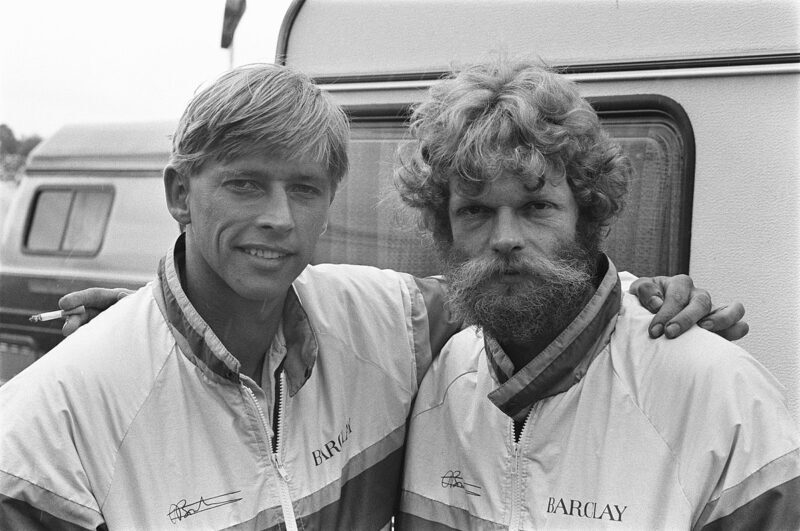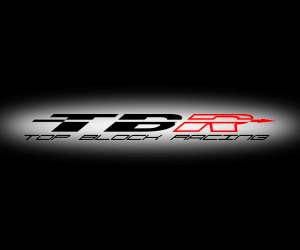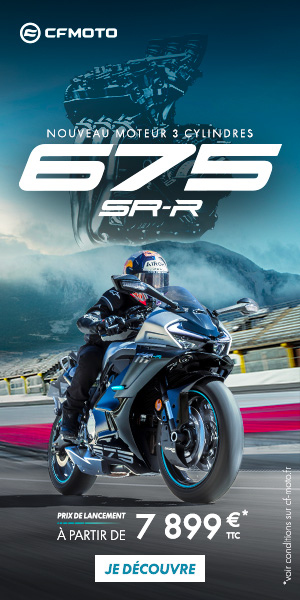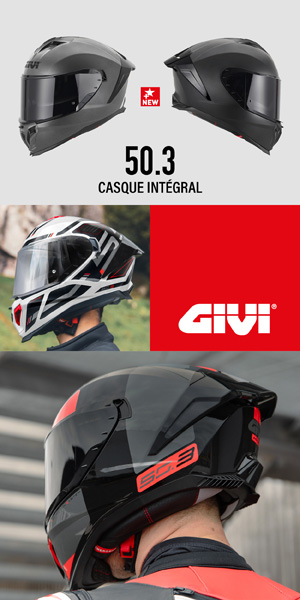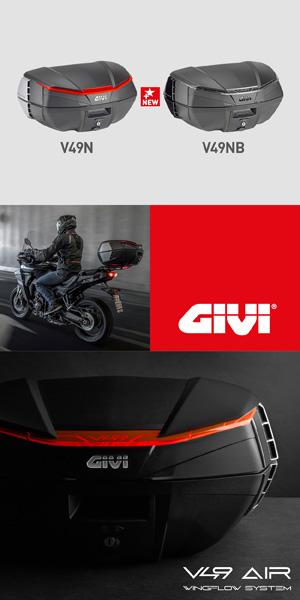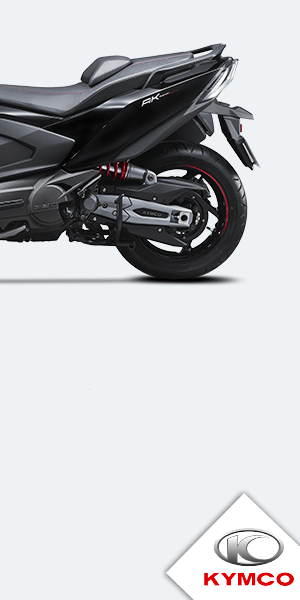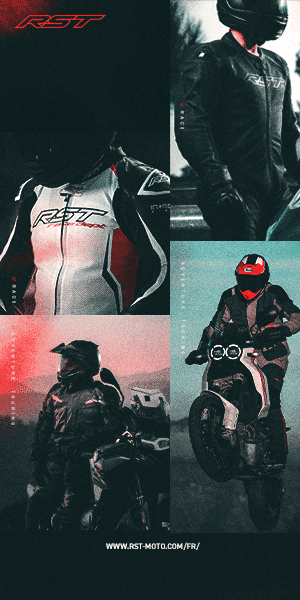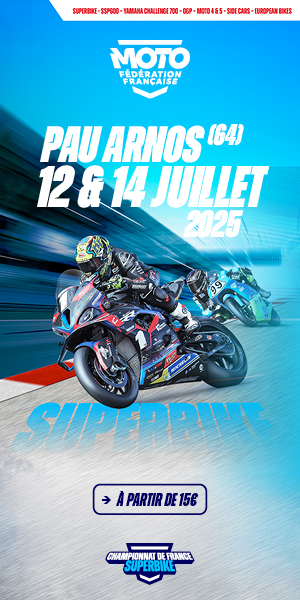Today, let's look at one of the main artisans of the golden era of sidecars, namely the Dutchman Egbert Streuer. Its unique look straight out of the seventies marked an entire era, today too often forgotten.
Born in 1954, his career on three wheels began in 1975 on the famous BMW teams. The Bavarian firm had dominated the world championship since the 1950s, but slowly, habits were changing as were the forces involved. The Deubel era was over in Grands Prix, but the Germans retained control of the championship. Thus, Streuer and his teammate Johan van der Kaap climbed the ranks at the national level and were titled in 1978 on a Schmid–Yamaha. That same year, they made their world debut. The category is very respected in the paddock, and many fans wait until the end of the two-wheel races to see these somewhat strange machines evolve.
Unlike Alain Michel, for example, the learning process takes longer for Egbert Streuer. For several years, he gained strength with van der Kaap but the latter retired at the end of 1980. The team now had a LCR (For Louis Christen Racing), the ultimate Swiss reference in the world of sidecar.
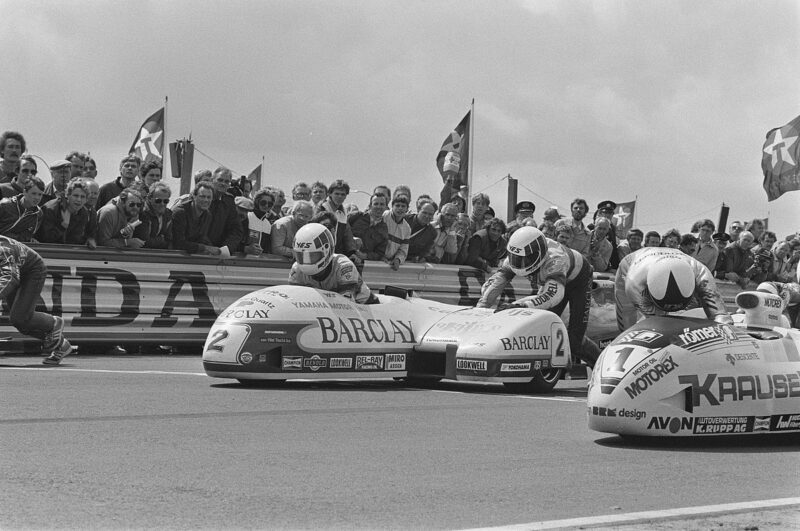
Streuer and Schnieders in sidecar no. 2 next to that of Biland, at Assen in 1984. Photo: ANEFO
Streuer took on board various monkeys during 1981, and it was a year later that he presented Bernard Schnieders to this position. At Silverstone, the sauce finally sets; the Dutch pair wins for the first time. At the time, you had to deal with Rolf Biland. The Swiss, perhaps the best sidecar driver of all time, is a tough opponent. In 1983, the latter was titled in front of our two thieves. Then, the era of domination begins. In 1984, Streuer and Schnieders were untouchable and took advantage of the pair's absence
Biland/Waltisperg on the majority of races of the year. Werner Schwarzel, 1982 world champion, can't do anything. Now crowned, they set off again for a ride.
This time it's much tighter. Balance sheet taken down, Schwärzel pushes and contains Streuer. As the season progresses, the two tandems cannot decide between themselves. Everything is played out in Sweden, near Anderstorp. If attention is focused on the exploit of
Freddie Spencer, who here validates his legendary 250cc/500cc double with another victory, no one forgets the unbearable outcome in the sidecar. Streuer is faster, that's for sure, and has the best dynamics... but is behind in the standings. The only goal: victory. Fortunately, they ran a race without a hitch and won, while Schwärzel/Buck
are second. Perfect tie, 73 points everywhere. But thanks to better intrinsic speed, the Dutch are new world champions.
In 1986, a new challenge.
Alan Michel et Jean-Marc Fresc, the French duo who is doing well, is still gaining strength. Here again, it is impossible to decide between the two crews over an entire season. The final looms at Hockenheim.
Dramatic twist: the helmet of Alain Michel, then leading the championship, was incorrectly attached after an interview given before leaving for TF1! Struggling like hell, the French finished 5th but could do nothing against the tornado Egbert Streuer, which doesn't ask for that much. Tied again, the two teams are decided by the number of victories and once again, the Dutch take advantage.
But good things only last so long. Now there's a new sheriff in town, Steve Webster. The Briton ended the 1987 season, but left only one victory to the Streuer/Schnieders duo, the most beautiful of all, in TT Assen. Despite being the best “motorcycle” rider in the country's history, he had never before won in the “cathedral”.
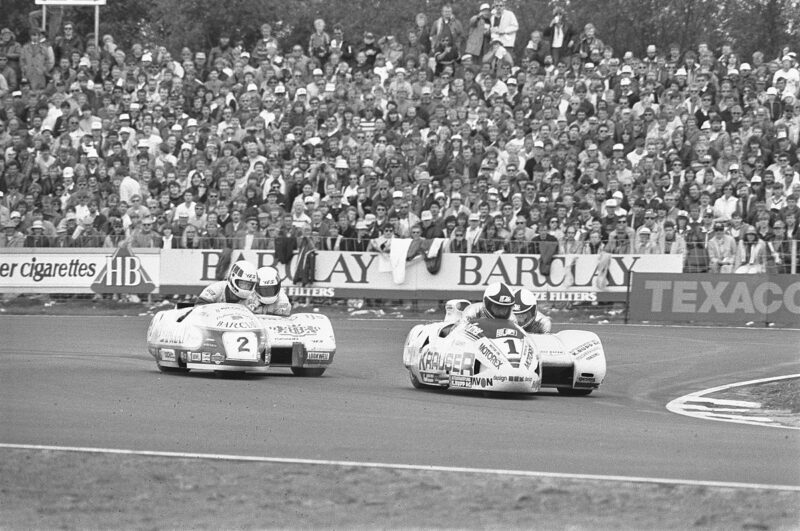
Rolf Biland in front of Egbert Streuer, at Assen in 1984. Photo: ANEFO
The seasons are similar, and another hard blow at the end of 1988, when
Bernard Schnieders decides to leave the ship. Geral de Haas replaces him. Until 1991, Egbert Streuer remained strong and a candidate for victory but he still lacked a bit of speed to take the reins of the world championships. Even with a Krauser engine in 1991, he is still a scarecrow on the overall podium, at 37 years old.
Then, in 1992, he hung up his leathers… with a victory, which is not so common. Now accompanied by
Peter Brown, he achieved a 22nd success in South Africa even if the situation was no longer viable. Sidecars no longer interest the public as before in this new era of Grands Prix, and sponsors are rare. Moreover, four years later, the disappearance of the category within the framework of the motorcycle world championship was recorded.
Even if he does not have the track record of a Biland, Egbert Streuer was a great figure in the paddock, known for his qualities as a development engineer and his careful driving. Realize, he only had two retirements in his entire career at the highest level. No one has forgotten the famous sponsor “Lucky Streuer”, in reference to the tobacco company. As is often the case in the discipline, he passed on the passion to his son
Bennie, who managed to win the world title in 2015 accompanied by Geert Koerts.
Did you know this driver? Tell us in the comments!
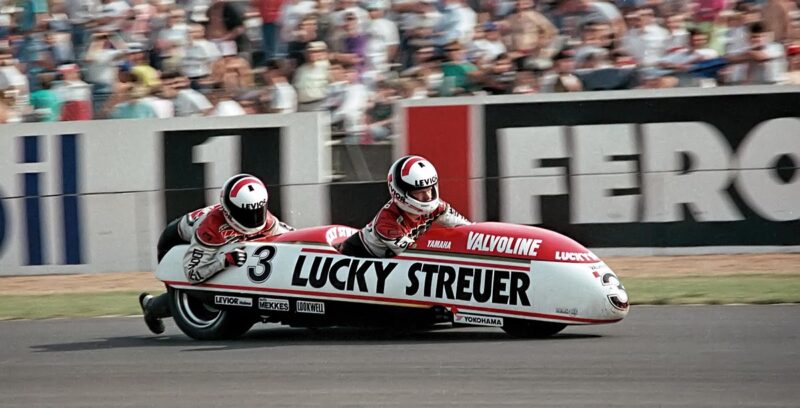
The famous “Lucky Streuer”. Here at Donington in 1989. Photo: Stu Newby
Cover photo: ANEFO, with Streuer on the right.












